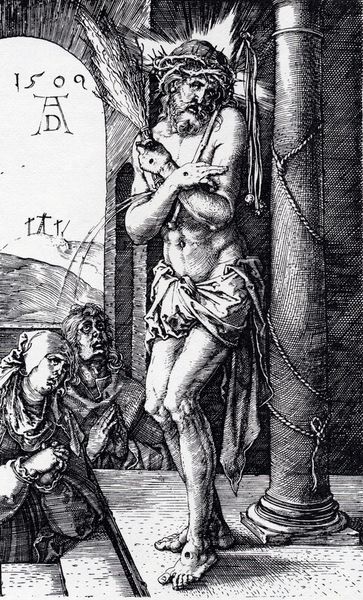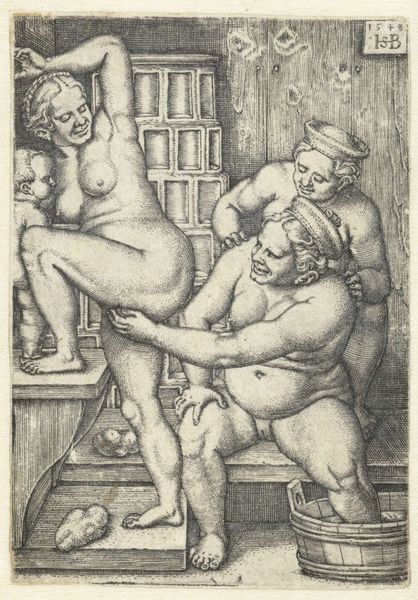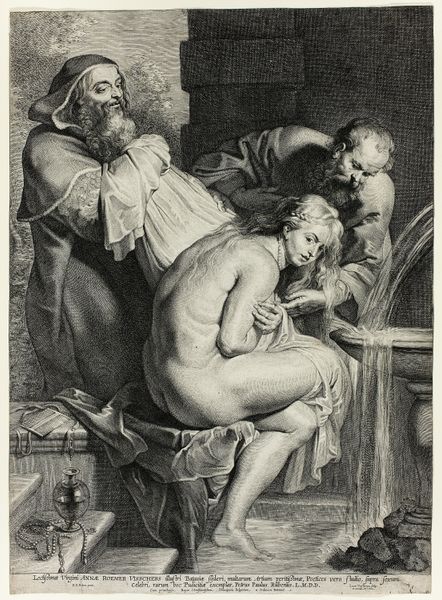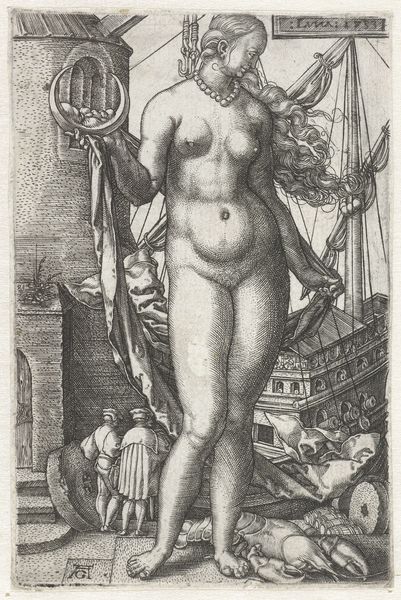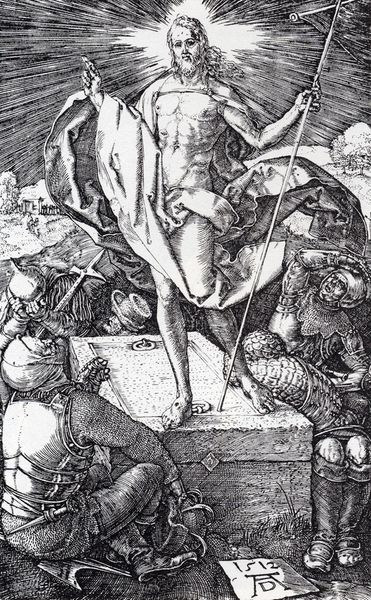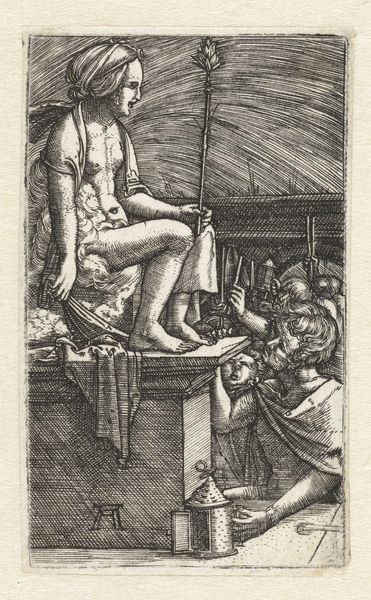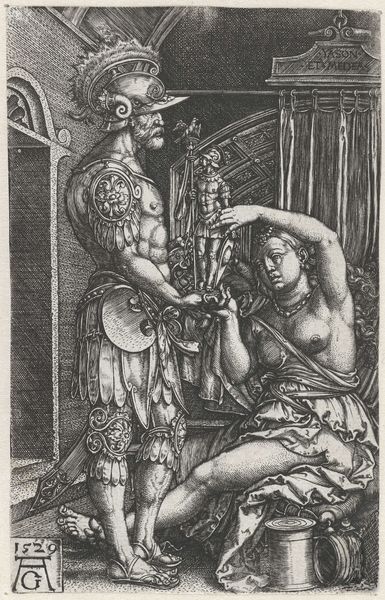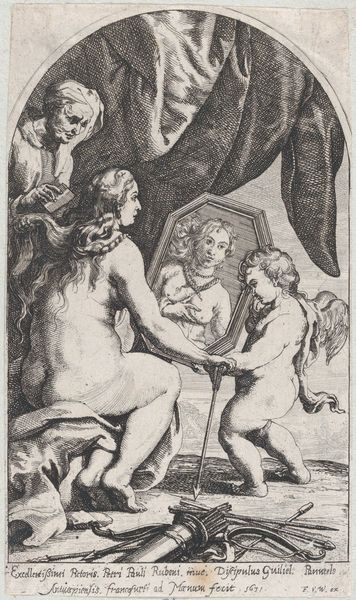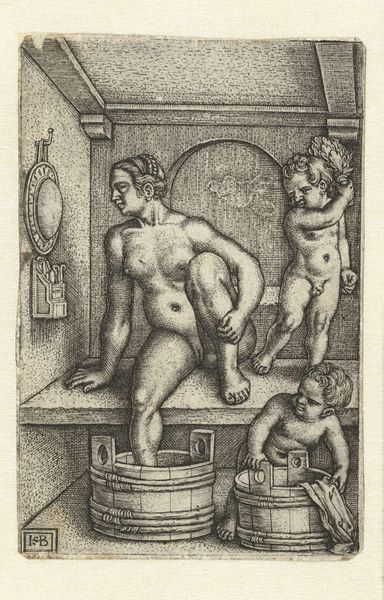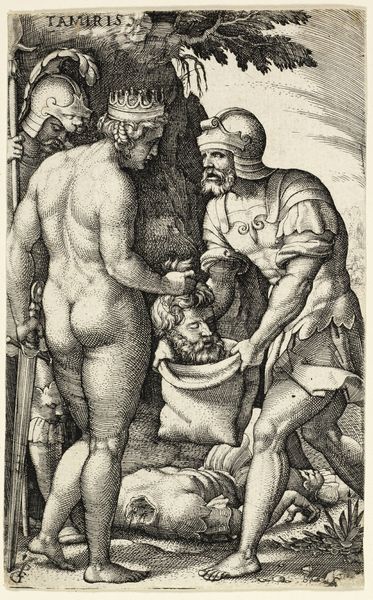
drawing, print, engraving
#
drawing
#
allegory
# print
#
figuration
#
form
#
line
#
portrait drawing
#
history-painting
#
northern-renaissance
#
nude
#
engraving
#
christ
Copyright: Public domain
Curator: The density of lines in this engraving is truly striking! Editor: Indeed. We are looking at Albrecht Dürer's "The Temptation of the Idler" from 1498, a magnificent example of Northern Renaissance printmaking. Dürer's control of the burin and the visual weight it yields is quite amazing. Curator: It's allegorical, isn't it? What I find especially interesting are the stacks of, well, what are they? Window frames? And the rather melancholic putto playing below. This suggests the stages and diversions found along the path of moral dissolution... very Lutheran. Editor: Precisely. Art history sees this as a commentary on humanist ideals, challenging viewers to consider the seduction of vice. See how that imp-like figure is pouring water into the sleeper’s ear—feeding him lies. Curator: That's chilling, but let’s consider how Dürer made this image widely accessible through printmaking. His workshop produced these engravings, distributing both images and ideas about the wages of sin on an unprecedented scale. Imagine how that process fueled popular religious imagination at the time. Editor: A powerful tool for social influence and reformation, no doubt! Note also, the contrast between the sharply delineated forms, the textures he's achieved with just line, and how Durer presents an almost tangible moral quandary in two dimensions. Curator: That's true! Also, consider the economy of materials: ink, paper, and a burin. It really underscores the Protestant work ethic he subtly depicts, and the moral that hard work literally pays more. Editor: It's an incredible fusion of skill, meaning, and the socio-religious currents of the era. An accessible picture with the potential to make lasting impacts. Curator: So, we observe not only artistry and influence, but also Dürer's use of production as moral persuasion for society’s transformation. Editor: Quite insightful. This detailed engraving speaks volumes about how the power of art lies in material processes, readily seen and replicated and distributed, and its subsequent impact on the human imagination.
Comments
No comments
Be the first to comment and join the conversation on the ultimate creative platform.
